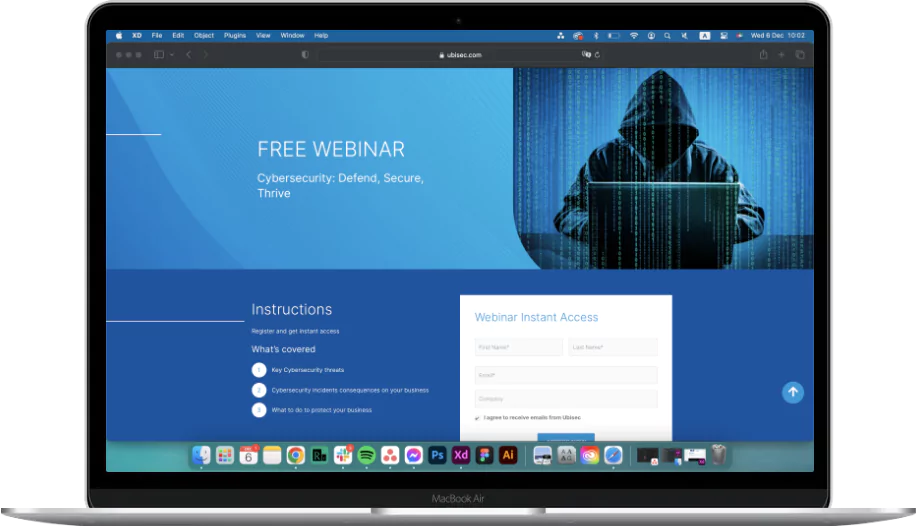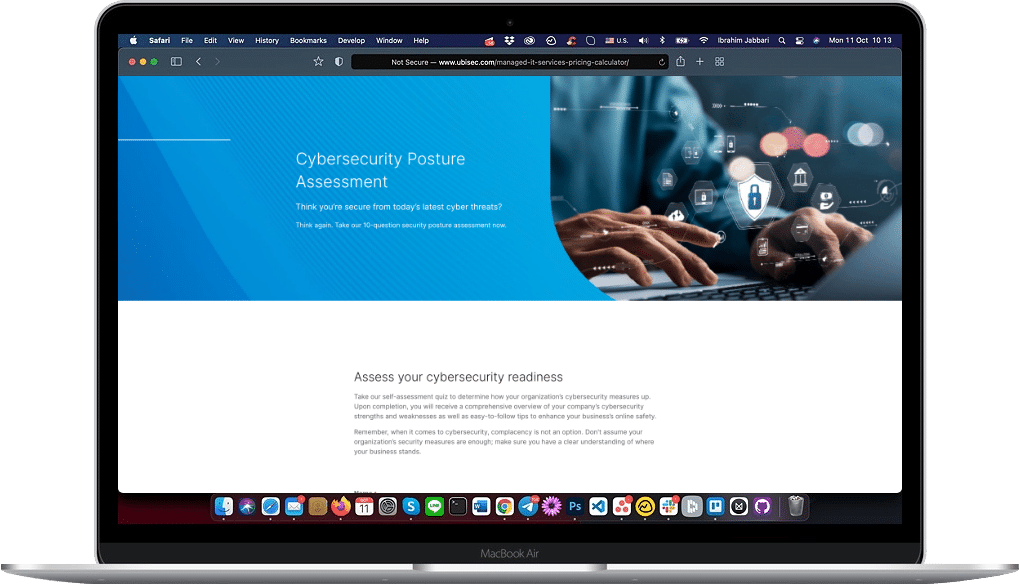Understanding the MITM Attacks
Is your organization prepared for an impending cyber-attack in 2024? Click here to learn more!

Network Security and Network Traffic
Network Traffic: The Lifeline of Digital Communication
Network Security: The Defense Mechanism
Network security encompasses a range of policies, procedures, and technological measures aimed at safeguarding the integrity, confidentiality, and availability of data and computer networks. By implementing robust network security, organizations can deter unauthorized access and protect against misuse, malfunction, modification, destruction, or unauthorized disclosure of data. This guarantees that computers, users, and programs perform their critical functions effectively and securely in a protected environment.
Cisco Umbrella DNS:
At the heart of Cisco Umbrella’s defense mechanism is the Domain Name System (DNS) layer. Cisco Umbrella DNS actively monitors and filters your internet traffic, blocking connections to malicious domains before they can pose a threat. It’s like a vigilant gatekeeper ensuring that every online destination your devices attempt to reach is safe and secure. By proactively screening DNS requests, Cisco Umbrella DNS adds a vital component of protection to your network, keeping you safe from potential cyber threats.
Wi-Fi Networks: Convenient yet Vulnerable
Network Connection: The Final Link
Compromising Network Traffic in MITM Attacks
In a typical MITM attack scenario, the attacker intrudes into the network communication between two endpoints. The interception usually occurs invisibly, and the two legitimate parties believe they are directly communicating with each other. Here are some ways network traffic is compromised:
- Interception:An attacker may utilize methods like packet sniffing to seize and scrutinize data as it moves through the network. Vulnerable data to this type of interception encompasses sensitive details like login credentials, financial records, or private communications.
- Alteration:During more sophisticated attacks, the intruder might modify the communication before it reaches the intended recipient. Alterations could include injecting malicious links into an email, changing transaction details, or modifying the contents of a message.
- Blocking: Occasionally, attackers might intentionally block or delay the transmission of data. Such disruptions can interfere with normal business operations, resulting in delays and potential financial losses.

How Does MITM Attacks Compare to Other Cyber Attacks?
DNS-Spoofing Attacks
DNS-spoofing attacks, also known as DNS cache poisoning, occur when an attacker introduces corrupt DNS data into the resolver’s cache, causing the name server to return an incorrect IP address and diverting traffic to the attacker’s computer (or any other). Attackers can use this method to redirect users to fraudulent websites, even if the users enter the correct address into their browsers. Unlike MITM attacks that intercept direct communication, DNS spoofing specifically targets the domain name system, which is essential for converting domain names into IP addresses.
Critical characteristics of DNS-spoofing:
- Deception: Directing users to fraudulent websites by corrupting DNS responses.
- Targeting DNS: Exploiting vulnerabilities in the domain name system.
Phishing Attacks
Phishing attacks involve manipulative tactics where attackers trick individuals into giving up sensitive information, like usernames or financial data, by pretending to be legitimate institutions. Often conducted through fraudulent emails, texts, or fake websites, these attacks target the psychological vulnerabilities of individuals, setting them apart from the more technically oriented MITM or DNS-spoofing attacks.
Critical characteristics of phishing attacks:
- Deception: Tricking users into providing sensitive information.
- Social Engineering: Exploiting human psychology and trust.
Differences Among the Attacks
While MITM, DNS-spoofing, and phishing attacks all aim to steal sensitive data or disrupt communication, their methods, targets, and defensive strategies differ significantly:
- MITM vs. DNS-Spoofing: While both involve interception, MITM attacks intercept actual communication between two parties. DNS-spoofing misguides a user at the very beginning of the communication process by corrupting the DNS resolution.
- MITM vs. Phishing: MITM attacks are more passive, focusing on interception and possible alteration of existing communications. In contrast, phishing actively engages targets with deceitful prompts to extract information directly from them.
- DNS-Spoofing vs. Phishing: DNS-spoofing attacks are primarily technical, attacking the network infrastructure itself, while phishing attacks are mainly psychological, focusing on deceiving individuals.
Is your cybersecurity posture up to par for a phishing attack? Click here to take our free quiz!

Why Preventing MITM Attacks is Critical for Businesses in the Digital Age
Increased Dependence on Digital Communication
Businesses today heavily rely on digital communication channels, making them vulnerable to MITM attacks if communications aren’t adequately encrypted.
Emergence of Data Transfers
As data transfers between businesses and stakeholders become more common, the risk of interception and manipulation by attackers increases without adequate security.
Financial Risks
MITM attacks can lead to significant financial losses, either through direct theft or by compromising sensitive data, leading to business disruption.
Reputational Risks
A successful MITM attack can severely damage a company’s reputation, as trust is hard to regain once customers know their data may not be secure.
Digital Age Demands
In the digital age, preventing MITM attacks is a necessity for business continuity and security.

Why Preventing MITM Attacks is Critical for Businesses in the Digital Age
Implement Strong Authentication Measures
Implement multi-factor authentication to diminish the likelihood of unauthorized access, even in cases of data interception.
Educate Employees about Security Risks
Teaching employees about the risks of MITM attacks and how to spot suspicious activities can prevent data leaks.
Use HTTPS for Websites
HTTPS ensures that all data between the website and the user is encrypted, preventing data interception.
Regularly Update and Patch Systems
Address known vulnerabilities through regular updates and patches to reduce the chances of attacks.
Encrypt all Data Transmissions
Encrypting data transmitted over networks ensures that intercepted data cannot be read or manipulated.
Install Reliable Security Software
Employ firewalls and intrusion detection systems as measures to identify and thwart Man-in-the-Middle attacks.
Use VPN for Remote Access
A VPN encrypts and secures all data transmitted for remote access to the company network.
Regularly Monitor Network Traffic
Monitoring network traffic can help detect unusual activity indicative of an MITM attack, allowing for early intervention.
Conclusion
To sum up, with digital platforms becoming essential to business processes, the urgency for strong security defenses against Man-in-the-Middle attacks is at an all-time high. Recognizing how these attacks work and adopting the recommended strategies can greatly reduce the risk and protect digital interactions. For tailored security solutions and more help, click here to contact Ubisec Systems.
FAQs
- What causes a man-in-the-middle attack?
– Typically, MITM attacks are caused by an attacker gaining access to the network between two parties.
- What are the stages of a man-in-the-middle attack?
– The stages include interception, decryption (if necessary), and transmission or alteration of the communication.
- How are man-in-the-middle attacks detected?
– They can be detected by monitoring for unusual network activity or discrepancies in communication.
- Do good passwords prevent man-in-the-middle attacks?
– Good passwords alone don’t prevent MITM attacks, but they are part of comprehensive security measures.
- How to prevent a man-in-the-middle attack?
– Preventing MITM attacks involves using encrypted connections, authenticating networks, and regularly updating security protocols.









